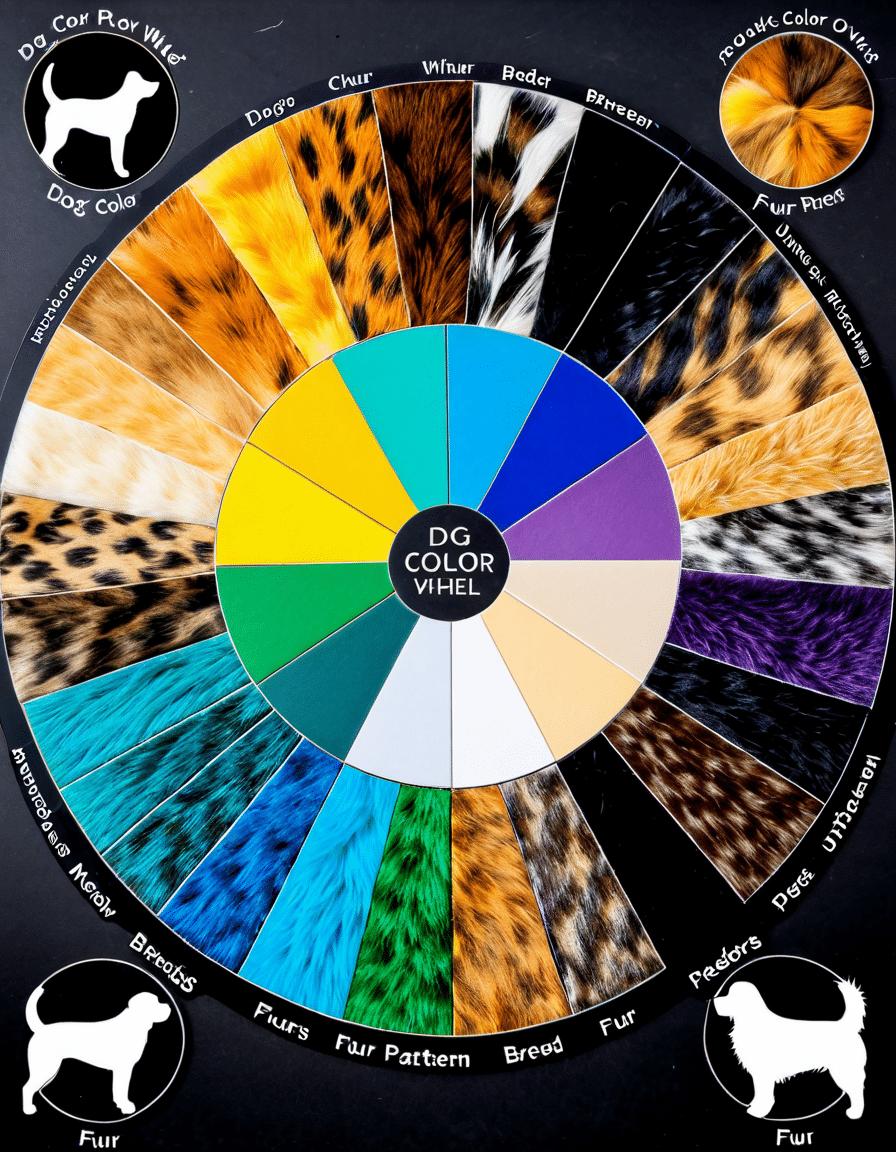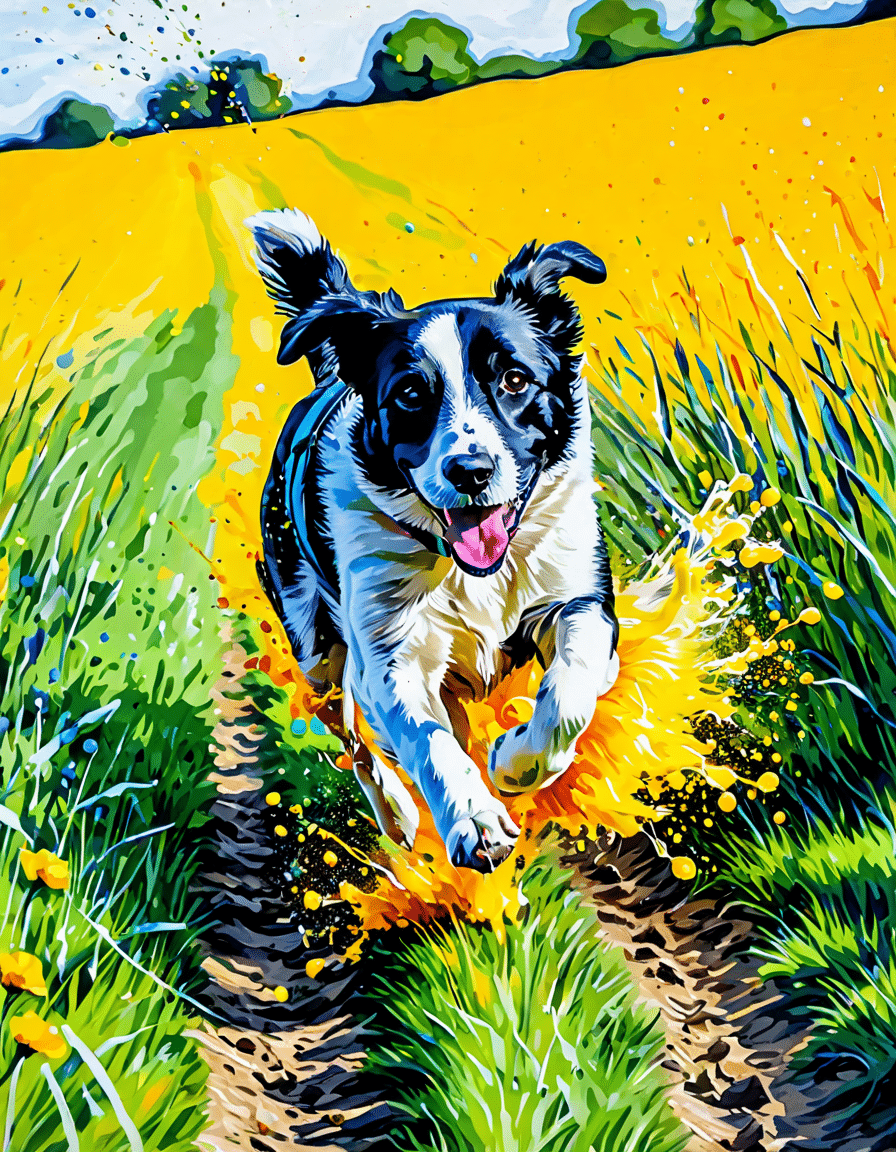Every dog owner knows that their furry friends come in a spectrum of beautiful dog colors. But what lies behind these captivating hues? Understanding dog color goes beyond aesthetics; it involves genetics, breed distinctions, and even the pet’s health. In this comprehensive guide, we’ll explore the fascinating world of dog color, unravel genetic mysteries, and link the beauty of canine coats to the wider animal kingdom. Buckle up as we dive deep into this colorful subject!
Understanding Dog Color: The Genetics Behind Those Beautiful Coats

1. The Science of Dog Color: Genetics Unraveled
The colors of a dog’s coat are a product of intricate genetic interactions, primarily influenced by two pigments: eumelanin and pheomelanin. Eumelanin generates black and brown shades while pheomelanin produces yellow and red tones. This fascinating interplay between the two pigments explains why different breeds showcase distinct coat colors.
Take the Pembroke Welsh Corgi, for example. This breed typically sports a bright red or sable coat. Meanwhile, the Labrador Retriever flaunts a broader palette, including black, chocolate, and yellow. The reason for these variations lies in specific genes like the A locus and E locus, which determine coat color, patterns, and any dilution effects. Understanding this genetic framework helps clarify why certain breeds seemingly adhere to traditional color schemes while others enjoy a range of shades.
Genetic research highlights how these color genes can also affect health. For example, merle-colored dogs, like some Australian Shepherds, can face deafness or vision issues due to their unique pigmentation. Digging into these genetic secrets not only enriches our appreciation for dog colors but also reminds us of their potential health implications.
2. Top 7 Most Fascinating Dog Colors and Their Unique Traits
As dog lovers, it’s time to celebrate some of the most eye-catching dog colors out there. Here are the top seven that’ll make any owner do a double-take:
3. Dog Color in Context: How It Compares to Other Species
When we dive into dog color and compare it to colors in other species, like horse colors, the similarities become fascinating. Take quarter horse colors, for instance. Much like how chestnut horses range from light to dark, dog breeds can exhibit a variety of shades due to genetic combinations.
Exploring the genetic underpinnings revealed by studies on coat color in horses sheds light on responsible breeding practices for dogs. The more we learn, the more significant connections we can draw between these two beloved animals. Just as horse enthusiasts appreciate the nuances of chestnut horse colors, dog owners can delve into the genetic artistry of dog color to gain insights into their pets’ traits and behaviors.
4. The Psychology of Dog Color: What Does Your Pet’s Color Say?
Dog color also reveals more than just physical traits; it offers insights into human psychology. Research shows that owners might unconsciously associate specific colors with personality traits. For example, owners of blue-coated dogs may feel drawn to the vibrancy and energy that comes with that hue.
On the flip side, folks with black or brown dogs often appreciate loyalty and stability, as these colors tend to evoke feelings of warmth and security. Notably, the potential for color psychology can influence adoption rates at shelters. Brighter, more colorful dogs often find homes faster than their more neutral counterparts, highlighting how our perceptions can affect these animals’ futures.
Wrapping it All Up: The Meaning Behind Color
In summary, dog color encompasses a multitude of aspects, from genetics to health, and impacts the emotional bonds between pets and their owners. Much like horses, whose vibrant coats tell their own tales, dogs have stories woven within their hues. Understanding these nuances not only enhances our appreciation for our dogs but also guides responsible breeding and care practices.
As we peel back the layers of dog color secrets, we discover that every shade tells a story, merging the complexities of genetics with the beauty of companionship. By embracing and understanding these colors, we can enhance our relationships with our pets and truly celebrate the wonderful world of dog color. The next time you admire your dog’s coat, remember there’s more to it than meets the eye!

Dog Color Secrets That Will Amaze Every Owner
The Science Behind Dog Color
Ever wondered why some dogs are rare colors, while others seem almost ordinary? The world of dog color is influenced by genetics, environment, and even a bit of mythology! For instance, the iconic black And tan German shepherd, adored for its striking appearance, actually owes its color to unique gene interplay. These marvelous hues stem from parentage and breed standards, which dictate not only visual beauty but also temperament traits linked to specific colors, much like how people often debate if can men wear women’s shoes. Speaking of color variety, some breeds offer a rainbow spectrum of shades, making the search for “the perfect pup” akin to choosing the best Mattresses; it’s often a matter of personal preference!
Interestingly, each dog’s coat can tell a story — not just about their breed, but about their health too! Did you know that dog urine can be either acidic or alkaline based on their diet and overall health? This may not seem directly linked to coat color, but watch closely; a dog’s diet could potentially affect the richness and glossiness of their fur! Just like how rapid breathing in Cats often indicates health worries, changes in a dog’s coat color could signify something deeper — think of it as sending out an alert.
Trivia to Brighten Your Day
Here’s some fun to add to your trivia collection: Did you know that your dog’s color can also impact their ability to absorb heat? Lighter-colored dogs tend to stay cooler in the sun, which might just help you make better choices for outdoor fun! And to add a sprinkle of mystery, the variations and shades of dog color have spurred countless ghost stories among dog enthusiasts — from specters appearing in the misty hues of phantom pups to tales of color-changing canines on moonlit nights.
Now, back to super-competitive canine trivia! The fastest racehorse in The world, perhaps unsurprisingly, doesn’t have to worry about dog color, but let’s not forget the interesting fact that colors also enhance visibility during activities like agility training. Did you know that studies show brighter colored dogs tend to have more playful dispositions? It’s like picking the cheerleader of a dog park! So the next time you find yourself marveling at different shades, remember that dog color is a fundamental element weaving together genetic tales, health indicators, and playful personality traits.


